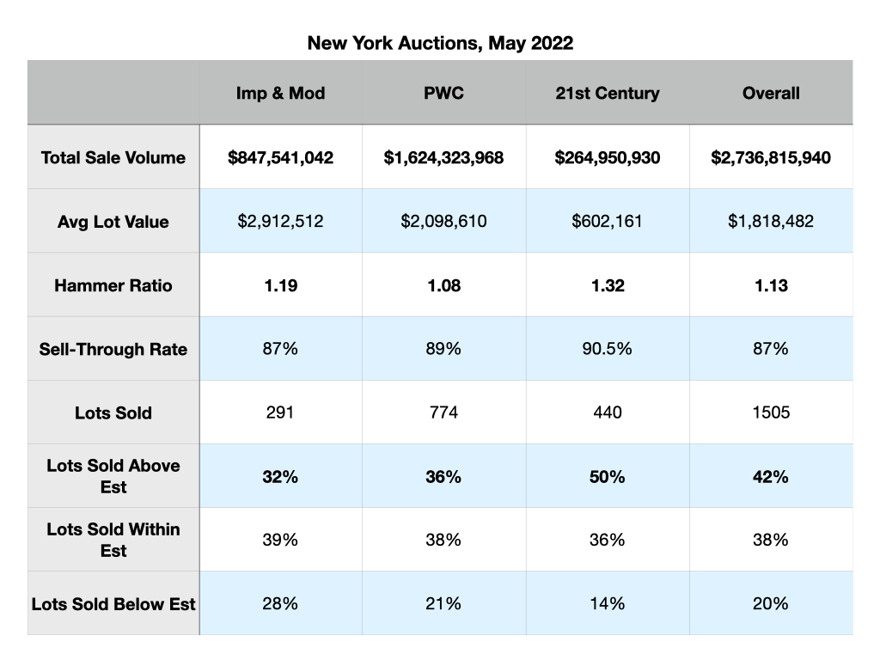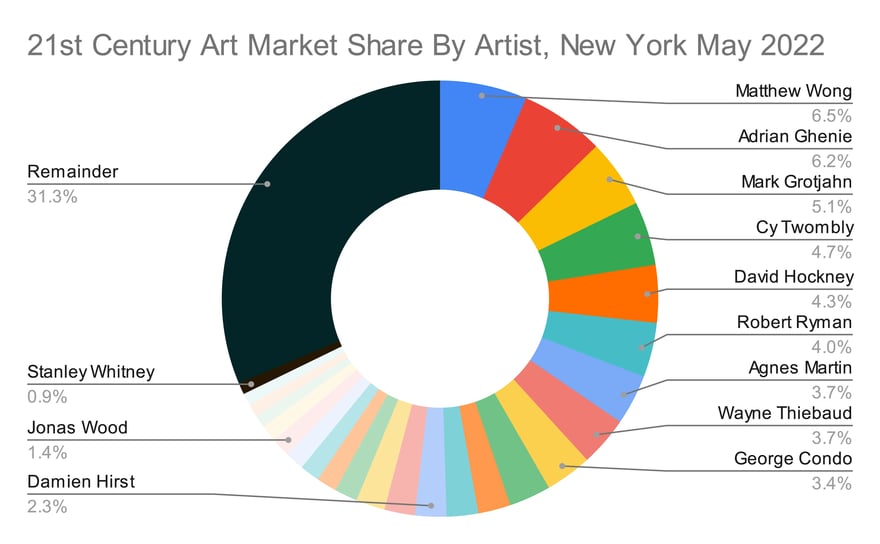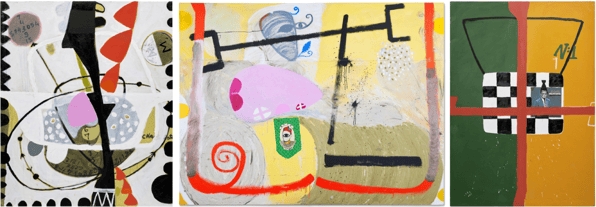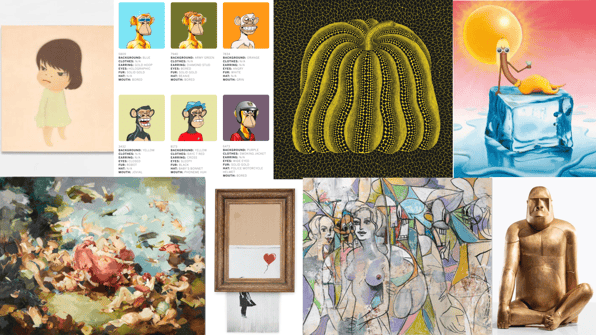New York Sales Total $2.7 Billion but Bidding and Value Are in Different Places
21st Century art saw the most aggressive bidding but the value still lies in Impressionist and Modern art.
The New York cycle of marquee auctions—dominated by the sales of three major collections—totaled $2.74 billion. The 1505 lots sold during the two weeks of sales had an average lot value of $1.8 million. Sold lots represented 87% of the 1723 works offered, a remarkably strong sell-through rate for an auction season that coincided with retreating financial markets. Not only did almost all of the lots offered sell, they sold well. A full 42% of the sold lots went for prices above the estimate range; another 38% were sold at prices in line with the estimates; leaving only 20% that had to be sacrificed by the consignors at prices below their expectations.
The hammer ratio for all of the auctions was a reasonably healthy 1.13. Hammer ratios measure the aggregate hammer price of the sold lots against the aggregate low estimate for all lots offered. A hammer ratio of 1.13 shows the market cooling from 2021 but still on the positive side. Bidders were willing to spend more than the low estimate even though the strong sales of the past two years have left estimates at ambitious levels. The hammer ratio was also supported by the high sell-through rates across all sectors of the market.
The weakest of the three submarkets within the fortnight long cycle was Post-War & Contemporary art which had the highest volume at $1.6 billion and represents 60% of the overall sales volume. LiveArt defines these markets by the date works are created, not the identity of the artist. For example, Pablo Picasso’s long creative life means his work made after 1940 is included in our Post-War category even though most auction houses would include his art in a Modern sale.
The PWC market’s 871 lots offered saw 774 sell for an 89% sell-through rate. Those lots worked out to an average lot value of $2.098 million with 36% of sold lots making prices above the estimate range. A slightly higher percentage of sold lots (38%) went for prices within the estimate range; 21% of the lots had to be sold at compromise prices, but they found buyers nonetheless. The hammer ratio of works made in the latter half of the 20th Century was the weakest of the three sub-markets at 1.08. Solid sale management at the auction houses saved that hammer ratio from falling below par.
In contrast, the Impressionist and Modern market for art created before 1940 was approximately half of the sale volume in PWC at $847 million. But the average lot value was a robust $2.9 million, the highest of the season. A strong 87% sell-through rate yielded 291 lots sold with 32% going above estimates; 39% within; and 28% sold below estimates. Selection and survivorship biases somewhat account for the skew of value toward older art. But the Imp-Mod category also had a higher hammer ratio than PWC. Bidders were active and willing to reach for the works they wanted to own. This could be a sign of a “flight to value” or simply a change of taste as buyers are attracted to seemingly undervalued styles and periods of art.
The smallest of the categories, 21st Century art or art made after the year 2000, accounted for $264 million in sales. There were 486 lots offered; 90.5% of the lots, or 440 of them, sold. Of the sold lots, half made prices above the estimate range—half! Another 36% of the lots sold within expectations and only 14% of the lots sold were sold against estimates that were just too high. The average lot value for works of art made in the past two decades was $602,161 which is a third of the overall average lot value and almost a fifth of the Imp-Mod category’s average lot value.
21st Century art works accounted for less than 10% of the total amount of money spent in May’s auctions. So the category’s 1.32 hammer ratio needs to be viewed in that context. These works are only a small portion of the value from these sales; however, the strong hammer ratio points to the way in which the market has reached an imbalance toward recently made art. Whether this is a function of the long overdue need to address past biases in collecting or simply the pendulum reaching the far end of its swing will not be known for some time.





